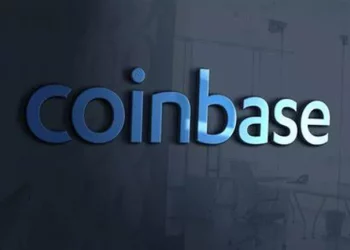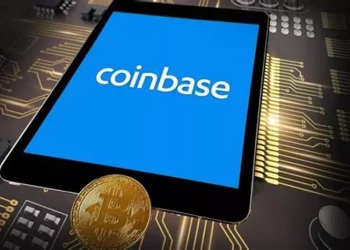When it comes to cryptocurrency exchanges, Binance stands out as one of the most widely used platforms. As a global leader in the crypto exchange market, Binance offers a vast selection of cryptocurrencies for trading and buying, as well as a variety of features aimed at improving the user experience. However, understanding the fees associated with buying crypto on Binance is crucial for traders and investors. This article will provide a detailed look at Binance’s fee structure, explaining the different types of fees that apply when buying cryptocurrency on the platform. We will also cover how users can reduce or avoid fees, making this a comprehensive guide for anyone interested in trading or buying crypto on Binance.
Understanding Binance’s Fee Structure
Before diving into the specific fees for buying crypto, it’s important to first understand the different types of fees Binance charges. Fees are a common part of cryptocurrency exchanges, and Binance is no exception. Whether you are a new investor or a seasoned trader, knowing the various fees involved can help you better manage your investments and maximize your trading strategy.
1. Spot Trading Fees
Spot trading is the most common form of trading on Binance, where users can buy and sell cryptocurrencies directly. When you buy crypto through spot trading, you will be charged a fee based on the total transaction value. Binance has a straightforward fee structure for spot trading that depends on whether you are a maker or a taker.
Makers: Makers are users who create liquidity on the exchange. For example, if you place a buy order at a specific price that is not immediately filled, you are adding liquidity to the exchange and are considered a maker. Binance rewards makers with lower fees.
Takers: Takers are users who accept orders that are already placed by makers. For instance, if you place a buy order at a price that matches an existing sell order, you are considered a taker and will pay a higher fee.
Binance’s spot trading fees follow a tiered system, meaning that the more you trade, the lower your fees can be. The fees are also different for different types of traders, with the fee structure divided into categories based on the user’s trading volume over the last 30 days or their Binance Coin (BNB) holdings.
Standard Fee: The default fee for both makers and takers on Binance is 0.10% for each transaction.
Discounts Based on Trading Volume: As your trading volume increases, you will qualify for fee reductions. Binance’s trading volume is measured in 30-day intervals, and depending on how much you trade, you can get a discount of up to 0.02% for makers and 0.04% for takers.
Discounts with BNB: Binance offers additional discounts if you pay your trading fees with Binance Coin (BNB), which is the exchange’s native cryptocurrency. The typical discount is around 25% for those who choose to pay fees in BNB.
2. Deposit Fees
When buying crypto on Binance, you will also need to deposit funds into your account. Binance typically does not charge a fee for depositing cryptocurrency into your account. However, there may be network fees that apply depending on the blockchain of the cryptocurrency you are depositing.
Cryptocurrency Deposits: When depositing cryptocurrencies like Bitcoin (BTC), Ethereum (ETH), or Binance Coin (BNB), Binance does not charge any fees for the deposit itself. However, you will be responsible for any network fees that apply to the specific blockchain used to make the deposit.
Fiat Deposits: If you are depositing fiat currency (such as USD, EUR, or GBP) to buy crypto, Binance charges fees depending on the payment method. These fees can vary significantly depending on the country you are in and the payment method used. For example:
- Bank Transfers: Typically, bank transfers are the least expensive method, but fees depend on the country and the specific bank.
- Credit and Debit Cards: Using a credit or debit card to deposit fiat currency into your Binance account often comes with higher fees. Binance charges around 1.8% to 3% per transaction for card payments.
- Third-Party Payment Methods: Binance also partners with third-party payment services like Simplex and Advcash, and these providers may impose their own fees on fiat deposits.
3. Withdrawal Fees
After buying cryptocurrency on Binance, you may wish to withdraw it to an external wallet. Binance charges withdrawal fees on cryptocurrency withdrawals, and these fees are determined by the cryptocurrency being withdrawn and the network it uses. Some of the most common cryptocurrencies and their typical withdrawal fees are as follows:
Bitcoin (BTC): Typically, the withdrawal fee for Bitcoin is around 0.0005 BTC, but this can fluctuate based on network conditions.
Ethereum (ETH): For Ethereum withdrawals, the fee is generally around 0.005 ETH, though it also fluctuates with network congestion.
Binance Coin (BNB): Binance offers lower fees for withdrawing Binance Coin, typically around 0.1 BNB.
Fiat withdrawals may also incur fees, depending on the payment method used. For example, bank transfers and credit card withdrawals have their own fees, with costs varying by region.
4. P2P Trading Fees
Binance also allows users to buy and sell crypto directly from one another through the peer-to-peer (P2P) trading platform. This option often offers lower fees compared to other methods of buying crypto on Binance.
P2P Fees: When using the P2P platform to buy crypto, there are typically no fees for the buyer, but the seller is responsible for any transaction fees. These fees vary depending on the currency being traded and the payment method used. P2P transactions generally have lower fees than buying through spot trading or fiat deposits.
5. Futures and Margin Trading Fees
For more advanced traders, Binance offers futures and margin trading. Both of these options come with different fees compared to regular spot trading.
Futures Trading Fees: Futures trading allows users to trade cryptocurrency contracts that predict the future price of an asset. Binance charges a fee for futures contracts based on the same maker-taker model as spot trading, but the fees are slightly different.
- Maker Fee: 0.02%
- Taker Fee: 0.04%
There are also potential discounts for high-volume traders or users who pay fees with BNB.
Margin Trading Fees: Margin trading involves borrowing funds to trade with leverage. Binance charges fees for both the interest on the borrowed funds and the trading fees on margin positions.
- Interest Fees: Interest fees vary depending on the asset you are borrowing and the duration of the loan.
- Trading Fees: Margin traders are charged the standard spot trading fees, but they may also incur additional costs for using leverage, depending on the specific assets and positions.
How to Reduce or Avoid Binance Fees
Although Binance offers competitive fees compared to other exchanges, there are ways to reduce or avoid certain fees, especially for frequent traders. Here are a few strategies:
1. Use Binance Coin (BNB) for Fee Discounts
One of the most effective ways to reduce fees on Binance is by using Binance Coin (BNB) to pay for trading fees. Binance offers a 25% discount on trading fees if users choose to pay with BNB instead of their regular funds. This discount can make a significant difference, especially for users who trade frequently.
2. Increase Your Trading Volume
As mentioned earlier, Binance offers tiered discounts based on your 30-day trading volume. The higher your trading volume, the lower your fees. For active traders, this is a valuable way to reduce costs over time. Traders who consistently maintain a high level of volume can qualify for the lowest fee tiers.
3. Leverage P2P Trading
For those who want to avoid high fees associated with fiat deposits, P2P trading can be a great option. Binance’s P2P platform allows users to buy crypto directly from other users with minimal fees. It’s important to note that fees can still apply, but they are often much lower than buying crypto through other methods.
4. Use Bank Transfers for Fiat Deposits
When depositing fiat currency, bank transfers tend to be the least expensive option. Avoiding high-fee payment methods like credit cards can save you a significant amount on deposits.
Conclusion
Binance offers a transparent and competitive fee structure for buying cryptocurrency. Understanding the various fees involved—whether for spot trading, depositing fiat, or withdrawing funds—is essential for traders and investors looking to make the most of their investments. While the fees on Binance are relatively low compared to many other exchanges, users can still benefit from taking advantage of fee-reducing strategies such as using Binance Coin (BNB) for discounts and increasing their trading volume.
By carefully considering your trading habits and utilizing available tools to reduce fees, you can ensure that you are maximizing the value of your cryptocurrency purchases. Whether you are a beginner or an experienced trader, understanding Binance’s fees is an important step in your crypto journey.
Related topics:

















